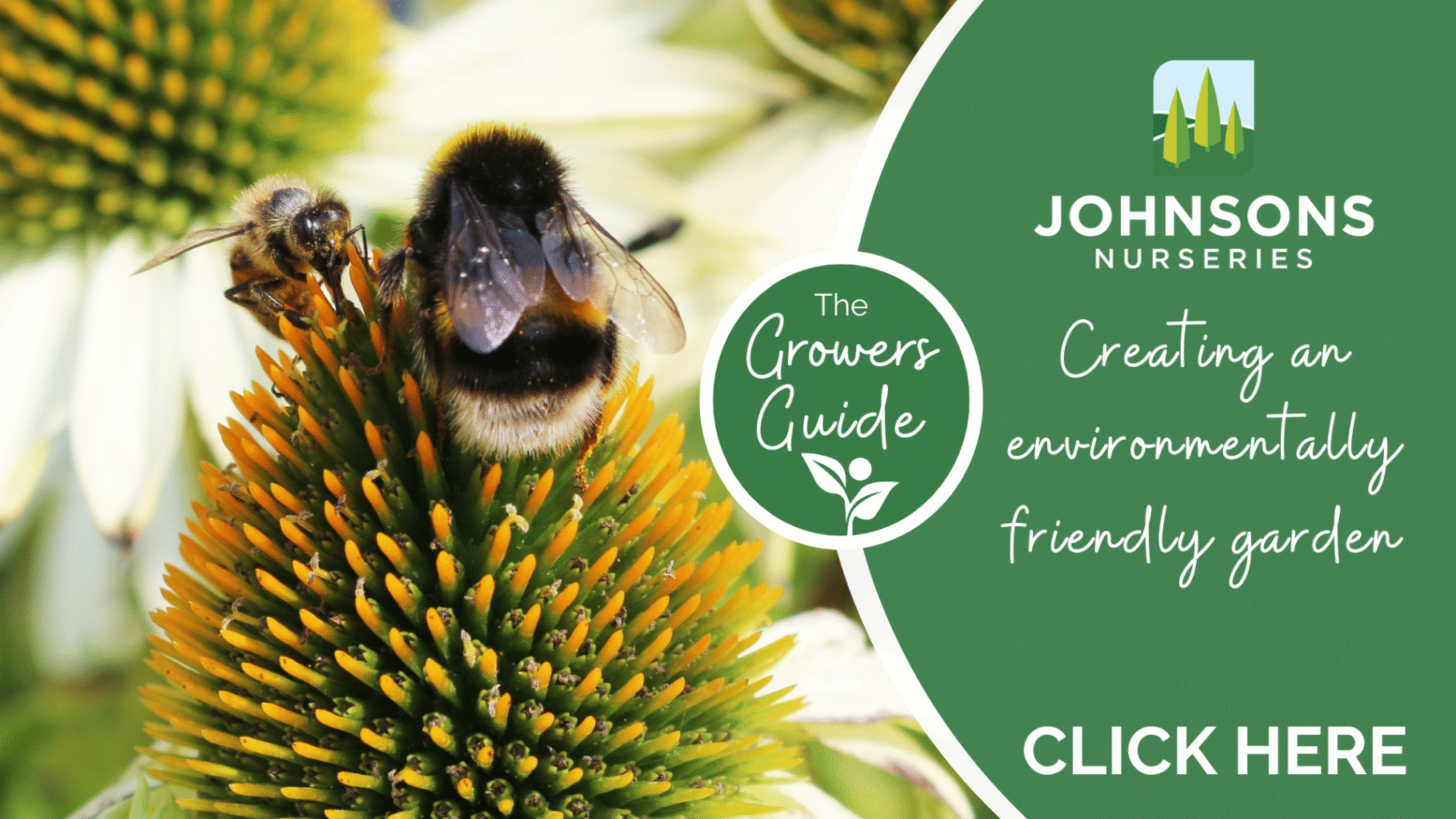
The world’s changing climate has many of us asking: What can we do to live more sustainably? Your garden is a great place to start. Below are practical tips for making your outdoor space kinder to the environment.
Install a water butt to collect and recycle rainwater for watering plants.
Direct water to the roots, not the leaves or flowers, to avoid waste.
Remove weeds so your plants get the full benefit of the water.
During hosepipe bans, use a watering can instead of a hose.
Water early in the morning or late in the evening to reduce evaporation.
Prioritise young plants and seedlings, as established plants can cope longer without water.
👉 Read our guide to watering in dry weather here
Save water by planting varieties that thrive with less watering.
Full sun options: Lavender, rosemary, buddleia, iris, kniphofia, salvia.
Shaded areas: Sarcococca, hypericum, euphorbia, digitalis.
These hardy plants will keep your garden looking vibrant while reducing water use.
Trees provide huge benefits for both the environment and your garden:
Absorb carbon dioxide and purify the air.
Offer homes for birds, insects, and other wildlife.
Reduce noise pollution in built-up areas.
Shade and cool your garden in summer.
Choose species with large leaves and wide crowns to maximise photosynthesis.
Native plants are perfectly adapted to the local climate and soil. They:
Require less maintenance and water.
Provide food and shelter for wildlife.
Support biodiversity in your area.
👉 See the RHS list of native trees and shrubs here
One-third of UK crops depend on bees and other pollinators. Help them thrive by planting species that attract them.
Popular with bees: Lavender, foxgloves, echinacea, wildflowers.
Attracts butterflies, moths, and hoverflies too.
👉 View our guide to pollinator-friendly plants here
Make your garden a safe haven for local wildlife:
Build birdhouses and feeders.
Create log piles for hedgehogs.
Add insect hotels for pollinators.
Small changes can make a big difference, especially in the colder months when food and shelter are scarce.
Composting reduces waste and gives your garden nutrient-rich soil. Use:
Leaves, grass cuttings, branches, natural debris.
Kitchen waste like fruit peels, eggshells, and old newspapers.
Homemade compost means fewer trips to the garden centre and a more self-sufficient garden.
Growing your own fruit and vegetables is:
Cost-effective
Rewarding
Better for the planet (reduces shipping emissions and plastic packaging).
Start simple with carrots, potatoes, apples, or berries before moving on to trickier crops.
Modern fences and walls can make it hard for animals like hedgehogs to move between gardens. Create small gaps or corridors to allow wildlife to pass through safely.
✨ By following these steps, you’ll not only create a greener, more sustainable garden but also a thriving space for plants, wildlife, and people.
Posted 4th Jun 9:16am